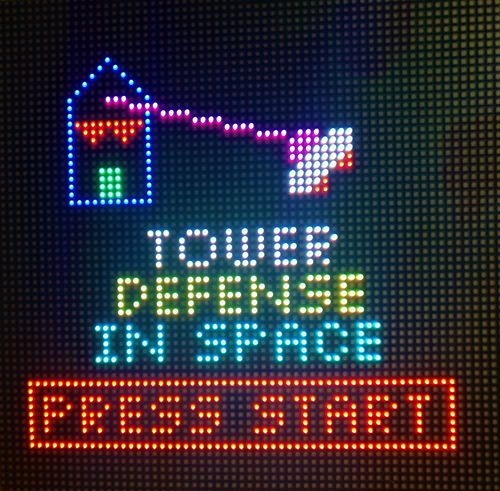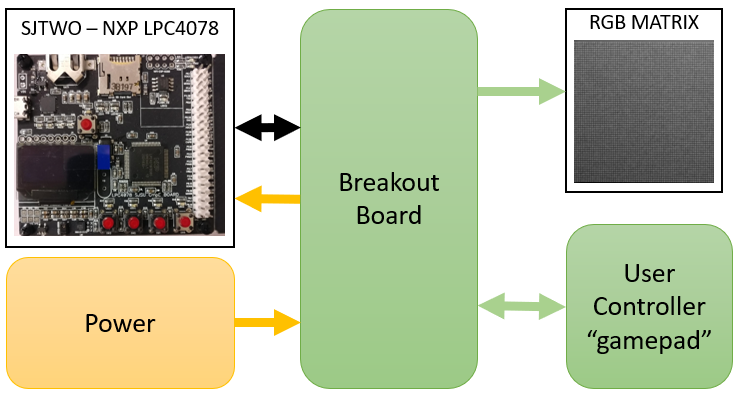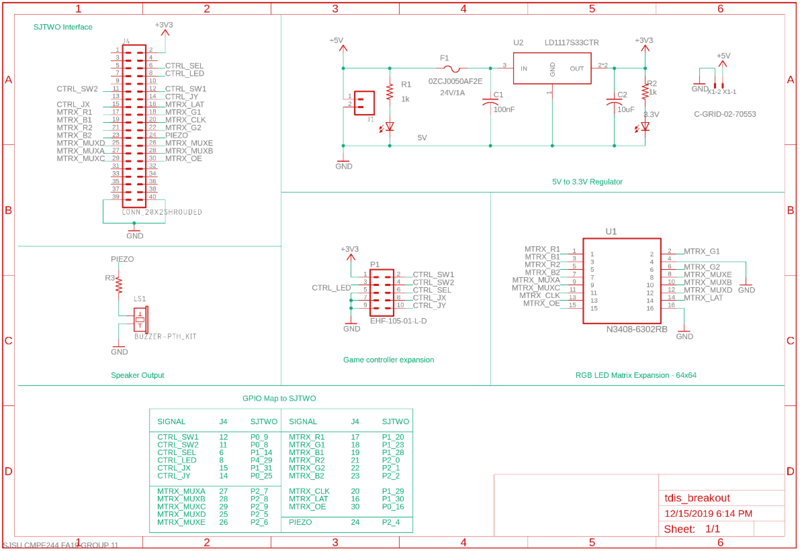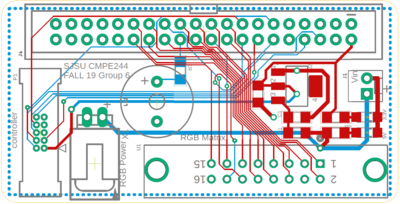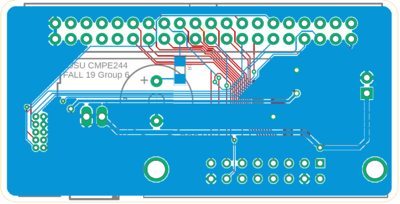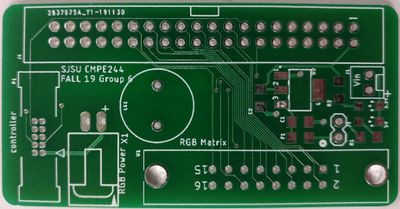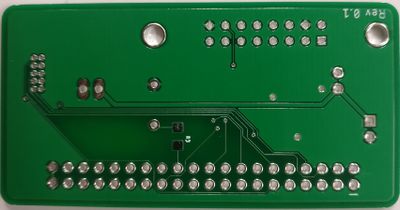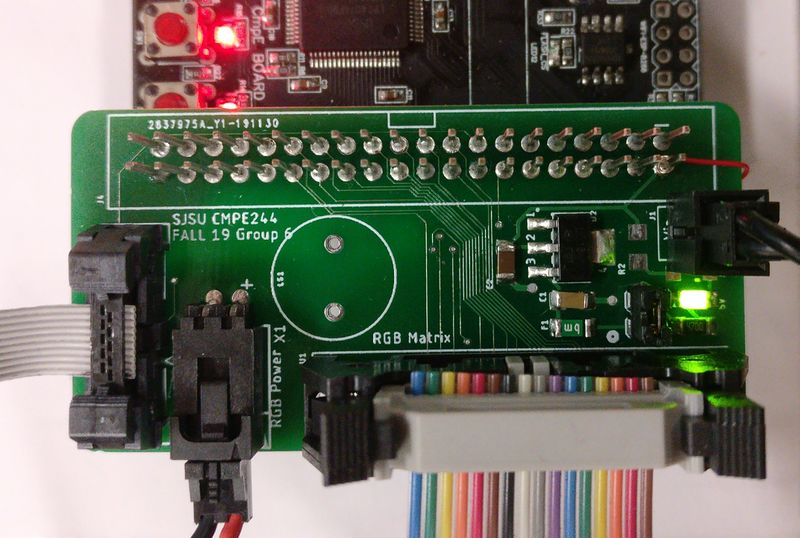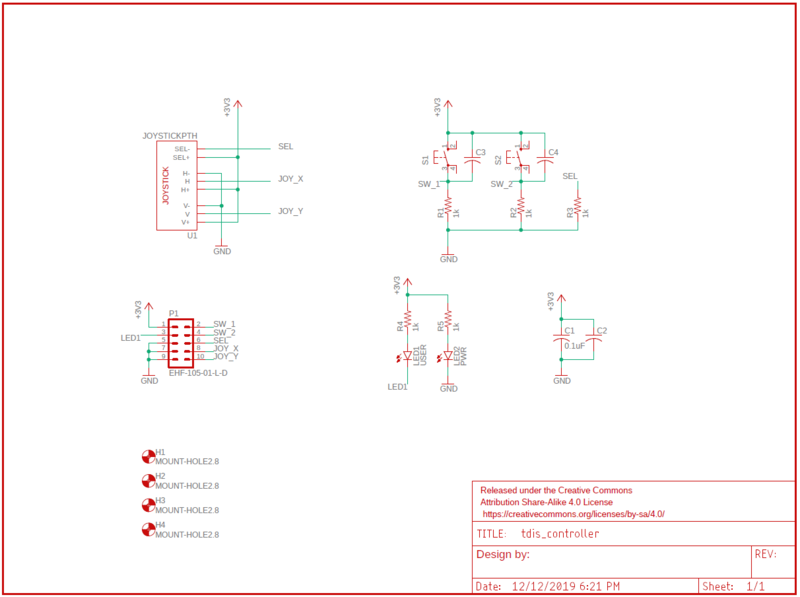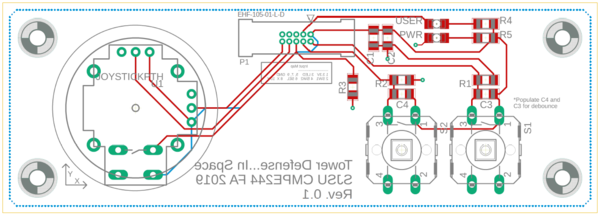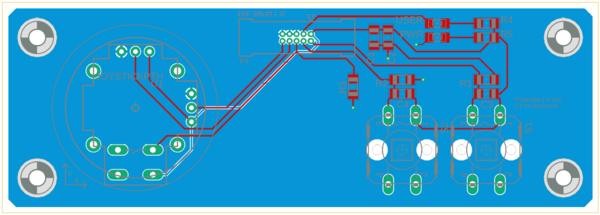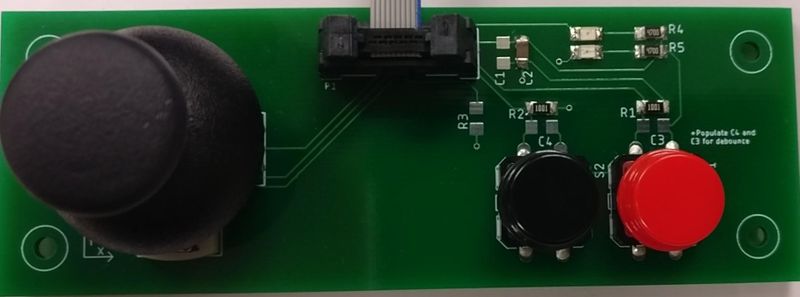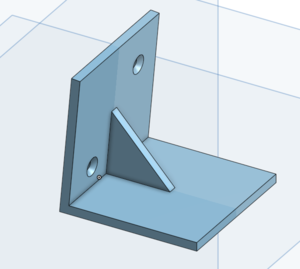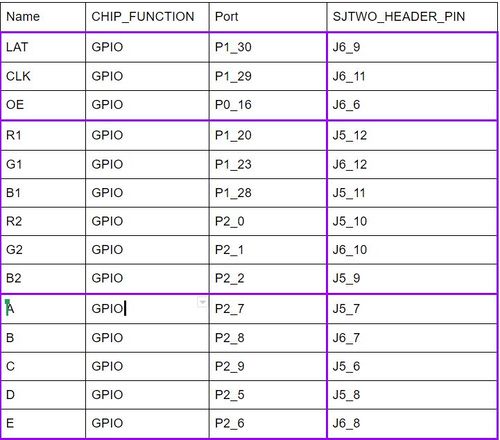F19: Tower Defense in Space
Contents
- 1 Grading Criteria
- 2 Tower Defense...In Space!
- 3 Abstract
- 4 Introduction and Objectives
- 5 Team Members
- 6 Schedule
- 7 Bill of Materials
- 8 System Design
- 9 Hardware Design - Electrical
- 10 Hardware Design (Mechanical)
- 11 Hardware Integration
- 12 Software Design
- 13 System Testing and Validation
- 14 Technical Challenges
- 15 Conclusion
Grading Criteria
- How well is Software & Hardware Design described?
- How well can this report be used to reproduce this project?
- Code Quality
- Overall Report Quality:
- Software Block Diagrams
- Hardware Block Diagrams
- Schematic Quality
- Quality of technical challenges and solutions adopted.
Tower Defense...In Space!
Tower Defense ... In Space.
Abstract
My abstract goes here.
Introduction and Objectives
intro here please.
Team Members
|
TEAM MEMBERS & RESPONSIBILITIES | ||||
|---|---|---|---|---|
|
Team Members |
Administrative Roles |
Technical Roles | ||
|
Team Lead |
| ||
|
Git Repo Manager |
| |||
|
Wiki Report Manager |
| ||
|
Bill of Materials Manager |
| ||
Schedule
|
TEAM MEETING DATES & DELIVERABLES | ||||
|---|---|---|---|---|
|
Week# |
Date Assigned |
Deliverables |
Status | |
| 1 | 10/15/19 |
|
| |
| 2 | 10/22/19 |
|
| |
| 3 | 10/29/19 |
|
| |
| 4 | 11/5/19 |
Kelvin
|
| |
| 5 | 11/12/19 |
Kelvin
Polin
Ryan
Zach
|
| |
| 6 | 11/19/19 |
Kelvin
Polin
Ryan
Zach
|
| |
| 7 | 11/26/19 |
Kelvin
Polin
Ryan
Zach
|
| |
| 8 | 12/3/19 |
|
| |
| 9 | 12/10/19 |
|
| |
Bill of Materials
|
Top Level | ||||
|---|---|---|---|---|
|
PART NAME |
PART MODEL & SOURCE |
QUANTITY |
COST PER UNIT (USD) | |
| |
|
|
| |
| |
|
|
| |
| |
|
|
| |
| 64x64 RGB LED Matrix* | Adafruit | 1 | $104.07 | |
| 5V 4A PSU | - | 1 | FREE | |
|
Breakout Board PCB** | ||||
|---|---|---|---|---|
|
Item # |
PART NAME |
PART SOURCE |
QUANTITY |
COST PER UNIT (USD) |
| 1 | IC REG LINEAR LD1117S33CTR | DIGIKEY | 5 | $0.351 |
| 2 | MHS16N-ND 16POS CONN 2.54MM | DIGIKEY | 2 | $2.60 |
| 3 | CAP CER 0.1UF 25V X7R 1206 | DIGIKEY | 5 | $0.221 |
| 4 | CAP CER 10UF 16V X5R 1206 | DIGIKEY | 5 | $0.202 |
| 5 | RES SMD 470 OHM 1% 1/4W 1206 | DIGIKEY | 10 | $0.0267 |
| 6 | PTC RESET FUSE 24V 500MA 1206 | DIGIKEY | 10 | $0.1588 |
| 7 | CONN SOCKET 40POS 0.1 TIN PCB | DIGIKEY | 2 | $5.03 |
| 8 | Manufacturing x 5 boards * | JLCPCB | 1 | $29.81 |
|
Gamepad PCB** | ||||
|---|---|---|---|---|
|
Item # |
PART NAME |
PART SOURCE |
QUANTITY |
COST PER UNIT (USD) |
| 1 | Analog 2-axis Thumb Joystick w/ select button | Amazon | 1 | $7.67 |
| 2 | SAM8205-ND 10POS 1.27MM | DIGIKEY | 5 | $3.38 |
| 3 | LED GREEN 1206 SMD | DIGIKEY | 5 | $0.24 |
| 4 | LED RED 1206 SMD | DIGIKEY | 5 | $0.257 |
| 5 | RES 1K OHM 1% 1/2W 1206 SMD | DIGIKEY | 5 | 0.0358 |
| 6 | CAP CER 0.1UF 50V X7R 1206 | DIGIKEY | 5 | $0.088 |
| 7 | 12x12x7.3mm Tactile Push Button w/ cap (pack of 25) | Amazon | 1 | $7.89 |
| 8 | Manufacturing x 5 boards * | JLCPCB | 1 | $14.21 |
* Shipping and tax included in value shown in the cost per unit column
** Only parts that were purchased are displayed.
System Design
System Block Diagram
Hardware Design - Electrical
Overview
At a high level hardware integration requirements fell into two categories:
1. Reduce risk of unreliable cable connections and eliminate possibility of damage to components through unexpected disconnections, power surges, etc.
2. Provide a more fluid physical interface for the user to interact with the game via hardware
To accomplish these goals, two boards were designed: a breakout board and a gamepad controller. The breakout board serves as a connection hub between all system hardware components; power, the RGB matrix, the SJTWO board, etc. while the joystick provides a cleaner package to present the user with the games inputs. The diagram below shows the relationship between the main subsystems:
All board designs were done using EAGLE and manufactured by JLCPCB. Both boards were only two layers and used passive components for the most part.
Breakout Board Design
The breakout board design requirement was to interface all external hardware components with the embedded system (SJTWO). The hardware connections are:
1. The 64x64 RGB Matrix
2. Output power to the RGB Matrix
3. User game controller (see next section)
4. Input power supply (5V)
5. The SJTWO embedded system
|
Known Issues | ||||
|---|---|---|---|---|
|
Summary |
Description |
Version |
Status | |
| 5V should not be routed to game controller. | 3.3V should be routed to the game controller instead of 5V since the ADC pins are not 5V tolerant. | 0.1 | Resolved Rev 0.2 | |
| Wrong silkscreen/not enough room near power input. | Power input silkscreen too small, part too big for 3.3V LED to fit | 0.1 | Resolved Rev 0.2 | |
| Linear regulator not needed. | The schematic for the SJTWO board labels the input voltage pin as VIN RAW, which is different than the label on the
optional input port. They are both the same, so this input feeds directly into the on-board 3.3V regulator. Essentially we're driving the regulator with the same voltage it outputs which just won't work well. |
0.1, 0.2 | UNRESOLVED | |
Gamepad Hardware Design
The gamepad board design requirement was to provide a more packaged interface for the user to interact with the game.
Hardware Design (Mechanical)
Only a few mechanical components were needed for this project. Namely simple brackets for mounting electrical hardware to the RGB matrix and displaying the matrix itself. All CAD designs were done using Onshape, a free CAD tool that can be used entirely through your web browser.
For displaying the RGB matrix, two brackets were 3D printed to prop it up. Their STL files can be found under our source repository.
Hardware Integration
RGB LED MATRIX
The LED matrix that we have is 64 pixels by 64 pixels and is controlled through a 12-pin header consisting of the following pins:
Pin Assignments:
- Five Mux pins (A,B,C,D,E) – Row Selection
- In order to select a specific row of the LED matrix, we need to control the output level of each mux pin. Since the LED matrix light up two rows of LEDs at one time, we only select 1 out of 32 rows.
- Two sets of RGB pins (R1,G1,B1,R2,G2,B2) – Color Selection
- Since we are driving two rows of LED matrix at once, we need 2 sets of RGB pins. One set is used to control the color pixels of the upper half of the display and the other set for the bottom half of the display.
- Output Enable Pin (OE)
- Output Enable (OE) pin is used to turn on or off the LEDs.
- Latch Pin (LAT)
- Latch pin is used to prevent the data being shifted into the shift registers and tells the shift register when it is time to switch to newly entered data
- Clock Pin (CLK)
- triggers a shift on the shift registers
All these pins are required to light up a specific LED pixel on the LED matrix display.
Software Design
RGB LED Matrix
All the LED Matrix data are stored in a buffer with its size equal to 32 by 64. Each element in this buffer store the color of two pixels, one pixel from the upper half of the display and one pixel from the lower half of the display.
In order to show the
System Flow Charts
System Testing and Validation
Technical Challenges
The mp3 decoder1053b's document is a kind of confusing for the mode when 1032b have several modes, hence doing the survey on the GitHub is really important. For example, using the sin wave and hello binary example to test how the Initialization and HZ parameter would save a lot of time. Besides, we also have to be careful to check the SJBoard's SPI because of the SD card reader is using for reading SDcard. Hence, I would recommend using other SPI0, SPI1 instead of using SPI2.
Conclusion
Conculsion please.
